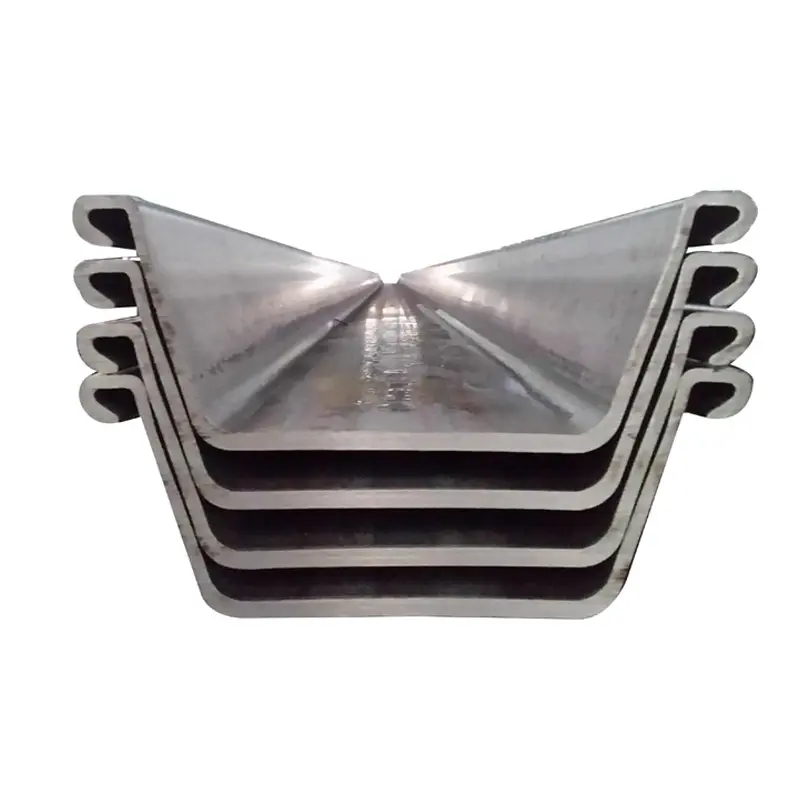Water conservancy steel sheet pile is a critical infrastructure material used in hydraulic engineering projects to manage water flow, prevent soil erosion, and construct retaining structures in wet environments. These sheet piles are designed to withstand hydrostatic pressure, soil loads, and environmental corrosion, making them essential for projects such as river embankments, canal linings, reservoir dams, and flood control systems. The core design principle focuses on creating a watertight barrier through interlocking steel sections, which can be driven into the ground to form continuous walls. Material selection typically includes high strength carbon steel grades like Q235, Q345, or ASTM A36, often combined with protective coatings such as hot dip galvanization or epoxy paint to enhance durability in water saturated soils or brackish water conditions. The cross sectional profile of water conservancy sheet piles often features a U shaped or Z shaped design, providing both structural rigidity and efficient interlock performance to minimize seepage. Manufacturing processes involve cold rolling or hot rolling to form precise profiles, with strict quality control over dimensional accuracy and interlock tolerance. Installation methods vary based on soil type, utilizing vibratory hammers for loose sediments or impact hammers for denser gravel layers, ensuring the piles are driven to the required embedment depth for stability. Engineering considerations include hydraulic gradient calculations to prevent piping failure, soil structure interaction analysis to assess lateral earth pressure, and long term corrosion modeling to predict service life. Post installation, integrity checks may involve visual inspection of interlocks, water pressure testing, and periodic monitoring of coating conditions. International standards such as ISO 10795 and Chinese GB/T 20933 govern material properties and manufacturing processes, ensuring consistency in load bearing capacity and watertightness. The sustainability of water conservancy steel sheet piles is highlighted by their reusability in temporary projects and recyclability at the end of service life, aligning with global trends toward green infrastructure. Their role in flood mitigation and water resource management makes them indispensable for maintaining ecological balance and protecting vulnerable communities from hydraulic disasters.


